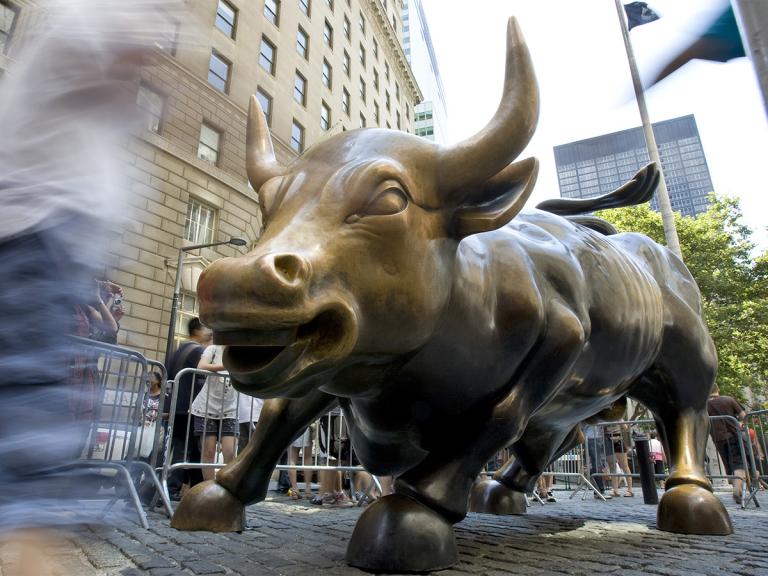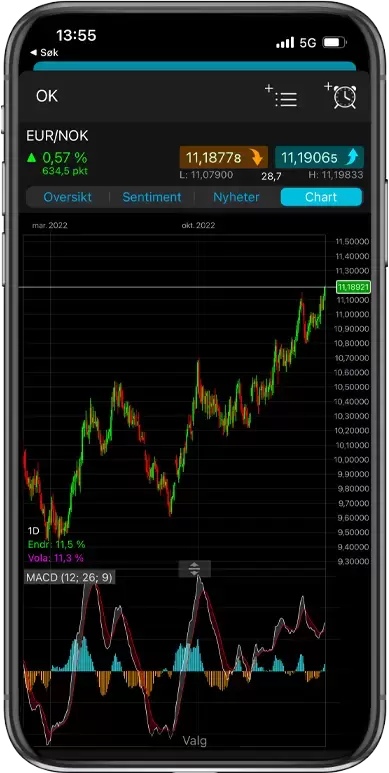This week’s most anticipated economic events are stacked towards the end of the week. On Thursday we’ll get the US consumer price index (CPI) reading for December and minutes from the European Central Bank’s recent meeting. Then on Friday US banks including JPMorgan Chase, Citigroup and Bank of America will unveil their fourth-quarter results. Retail is also a theme of this week’s earnings announcements, with Sainsbury’s, Tesco and Marks & Spencer all set to report third-quarter results. Over in the US, beleaguered home goods chain Bed Bath & Beyond is due to issue Q3 results and provide further details on its possible bankruptcy.
KEY ECONOMIC AND COMPANY EVENTS (9-13 JANUARY):
Monday 9 January
No major scheduled announcements
Tuesday 10 January
Bed Bath & Beyond Q3 results
On Thursday Bed Bath & Beyond warned of possible bankruptcy, sending its shares down almost 30% to $1.69 at the close. Time appears to be running out for the beleaguered home goods chain, which said that it may not be able to continue as a going concern.
The writing has been on the wall for several months now, though last summer offered the illusion of a recovery. Shares in Bed Bath & Beyond surged from $5 to $30 amid a short squeeze in August as investors awaited a strategic update at the end of that month. However, the shares quickly tumbled to less than $10 after investor Ryan Cohen, the company’s biggest shareholder at the time with an almost 12% stake, sold his entire holding. With the August update failing to restore investor confidence in the business model, shares in the company continued to drift lower. The shares ended 2022 down more than 80%.
As part of the August update the US retailer announced that sales declined 26% in Q2, forcing management to close 150 of its roughly 900 stores and lay off around 20% of its workforce, including the chief operating officer and chief store officer. The company also said that it had agreed financing deals worth more than $500m to try and save the ailing business. Revenue in Q2 fell 28% to $1.44bn, with losses coming in at $366m, or $3.22 a share. That was much worse than the per-share loss of $1.85 that analysts had predicted. For Q3, the company expects to report a loss of $385.8m on revenue of $1.26bn, well below revenue forecasts of $1.4bn.
Wednesday 11 January
J Sainsbury Q3 results
In November Sainsbury’s reported that half-year revenue had risen 4.4% to £16.4bn, driven by a 39.5% increase in fuel sales. However, profits before tax were down 29% at £376m.
Grocery sales at the UK’s second-biggest supermarket chain by market share rose 0.2% over the half-year and 3.8% in Q2. General merchandise sales fell across the half-year period, but grew 1.2% in Q2. Retail sales excluding fuel declined 1.3% during the half.
In Q3 grocery price inflation of more than 15% is likely to have maintained pressure on margins, though the World Cup may have provided a boost as consumers typically splash out on extra food and drink during the event.
Last month Sainsbury’s pledged to invest £50m by March to keep prices down and compete with cheaper rivals like Aldi and Lidl. The spending on its value plan comes in addition to the original £500m outlined last May. The business also said in November that it is halfway through a £1.3bn cost-cutting programme. Sainsbury’s kept its full-year profit guidance unchanged at between £630m and £690m.
Thursday 12 January
US CPI (December)
Last year consumer prices in the US fell from a peak of 9.1% in June to 7.1% in November. Inflation eased faster than expected in November, with economists having expected CPI to slow to 7.3% from 7.7% in October. That offered a boost to investors who had hoped to see the Federal Reserve slow the pace of interest rate rises heading into 2023. Core consumer price growth subsided from 6.3% in October to 6% in November, and is expected to have eased further to 5.7% in December.
Some of the optimism around slower rate rises faded after average hourly earnings increased at an annual rate of 5.1% in November, up from 4.9% in October. Although the Fed raised rates by half a percentage point in December, ending a run of four consecutive 0.75-point hikes, policymakers may be wary about further slowing when they meet at the end of this month.
Despite the slowdown on rate hikes, Fed officials including chair Jay Powell have insisted that interest rates still need to go much higher. While markets remain sceptical about that narrative, they are also taking into account the fact that the Fed tends to err on the side of doing too much rather than too little. However, if the Fed overtightens monetary policy, it risks a hard landing. Thursday’s CPI reading could give officials much to ponder.
ECB meeting minutes
In December the European Central Bank raised interest rates by 0.5 percentage points to 2%, catching a lot of people off guard. While the half-point rate hike marked a slowdown in the pace of eurozone rate rises, ECB president Christine Lagarde insisted that Europe’s central bank was not going soft in its fight against high inflation. On the contrary, she spooked markets by saying that the intention was to increase rates by at least 50 basis points at each of the next three meetings.
Lagarde’s comments sparked a sharp rise in European bond yields amid concerns that the ECB could overtighten heading into an economic downturn, repeating a mistake it made after the 2008 financial crisis. ECB officials clearly want to put the inflation genie back in its bottle, but there is a risk that they could overplay their hand. Although there are differences of opinion on the governing council about how high rates need to go, several members are calling for a terminal rate in excess of 3%.
The risk is that tightening too hard – primarily to allay deep-rooted, northern European fears about high inflation – could provoke a sharp economic downturn. The publication of minutes from the December meeting should offer insights into how widely opinions differ and the extent to which the ECB is prepared to push rates higher.
Tesco Q3 results
The Tesco share price has bounced back since October, when a profit warning sent the shares to a six-year low of less than 200p. Although retail like-for-like sales grew 3.2% in the first half of Tesco’s fiscal year, driven by double-digit growth in Europe and in its Booker wholesale division, the supermarket chain warned that full-year retail adjusted operating profit was likely to be around £2.4bn to £2.5bn, at the lower end of its previously guided range.
Last time out, Tesco also reported that half-year statutory operating profit fell 43.6% to £736m, despite revenue growing 6.7% to £32.5bn, as operating costs increased. Half-year pre-tax profit fell 63.9% to £413m, down from £1.14bn a year ago.
Marks & Spencer Q3 results
Shares in M&S fell more than 40% last year, wiping out the gains made in 2021. However, after bottoming out in October, the shares partially recovered as markets priced in a significant slowdown in consumer spending. The retailer’s half-year results, released in November, showed that profit before tax fell 23.7% year-on-year to £205.5m, though revenue rose 8.5% to £5.54bn.
Ocado Retail, the joint venture between M&S and Ocado Group, recorded a half-year loss of £0.7m, compared to a profit of £28.1m a year earlier. In better news, sales of general merchandise increased 14% during the same period, while food sales grew 5.6%. M&S said that trading was in line with forecasts as the company approached the run-up to Christmas, a crucial period for retailers. However, the company also said that it expected Q4 to be particularly challenging.
Costs rose sharply in 2022. Half-year operating profit in M&S’ food division fell to £71.8m, down from £124m in the year-ago period, as overall costs rose 8.4% year-on-year. This contributed to margins contracting by 70 basis points. Bosses hope that their acquisition of Gist, M&S Food’s main logistics provider, in July will help the business manage its supply chains and control costs more efficiently.
Investor pessimism towards the M&S share price may be somewhat overdone. The company remains in the midst of a major transformation that began under former chief executive Steve Rowe, who was succeeded by Stuart Machin last May. The early signs suggest that the revamp may be bearing fruit, despite a challenging economic environment. In an investor presentation last October, Machin announced that M&S would speed up the closure of full-line, legacy stores in town centres, open new branches in out-of-town sites, and open more Simply Food stores. This process is now expected to take place over the next three years, rather than over the original five-year time frame.
Whitbread Q3 results
Despite the strain on consumer budgets, hospitality business Whitbread seems to be performing well. Shares in the owner of Premier Inn hit an 18-month low in October amid the chaos of Liz Truss’ ill-fated mini-budget, but have since rebounded. Nevertheless, the company still faces challenges, with corporation tax rates set to rise to 25% from April.
The company’s interim results, released in October, showed half-year statutory revenue more than doubling year-on-year to £1.35bn. While some may quibble that this figure came in slightly short of forecasts, the business has clearly recovered well from the hit it took during the pandemic, with sales in the six months to 1 September 2022 boosted by the UK’s long, hot summer. Statutory profit after tax came in at £233.9m and basic earnings per share increased to 115.7p, up 29% versus the same period three years earlier, before the pandemic.
Occupancy rates in the UK came in at 84.8% in the six months to 1 September, while in Germany they were at 63.4%, with both figures beating forecasts. Costs have been rising, leading Whitbread to warn that margins would tighten in the second half of the year. The increase in costs for the full year is expected to be in the region of £60m.
Friday 13 January
China trade (December)
The Chinese government’s screeching U-turn on its zero-Covid policy last month is unlikely to have had an immediate positive impact on trade. On the contrary, the decision to allow the virus to circulate freely is expected to have placed further strain on business activity. Estimates suggest that in December exports from China fell 12% year-on-year, while imports to the country are thought to have declined by 10% on an annual basis.
In November, lockdowns continued to stifle domestic demand, cause drops in production, and disrupt global supply chains. Exports from China plunged 8.7% year-on-year in November, while imports to the country tumbled 10.6% year-on-year. Both declines were worse than markets had expected.
Trade data for December are likely to indicate further weakness. Protests against the government’s strict zero-Covid policy led to an easing of restrictions in mid-December, but reopening also triggered a spike in infection rates as the virus ripped through a largely unvaccinated population. Although the easing of restrictions should boost trade in the long run, business disruptions seem set to continue in the near term.
JPMorgan Chase Q4 results
Last year was a disappointing one for US banks in terms of share price performance. That said, the declines came after a strong 2021, when their stock market valuations were boosted by share buybacks and improved payouts as lockdown-era credit loss provisions were added back to balance sheets. In 2022 the rising cost of living prompted banks to adopt a more cautious strategy in their retail divisions, while the volatility in financial markets saw investment banking revenue fall back sharply as M&A activity quietened.
In October JPMorgan shares hit an 18-month low before recovering later in the year, but challenges on the horizon in 2023 have darkened the bank’s outlook. For Q3 JPMorgan reported revenue of $33.49bn, beating expectations of $32.35bn, while profits came in at $3.12 a share, above expectations for $2.91 a share. Revenue from investment banking and fixed income, currency and commodities (FICC) also beat expectations, coming in at $1.7bn and $4.5bn, respectively. Equity market revenue came in short at $2.3bn. Commenting on the “solid performance”, CEO Jamie Dimon said that the bank “hopes to be able to resume stock buybacks” early in 2023.
Another notable item in the Q3 results was the $1.54bn in provisions for credit losses, which was well above expectations and suggests that JPMorgan foresees trouble ahead. The upcoming Q4 results should help clarify whether those concerns are valid, and whether further provisions were set aside. Profits in Q4 are expected to come in at $3.12 a share.
Citigroup Q4 results
While JPMorgan enjoyed a decent Q3, Citigroup’s results were a mixed bag. Those differences in performance are partly reflected in the two banks’ share price performance, with Citigroup stock down almost 30% last year, compared to JPMorgan’s roughly 20% decline.
In Q3 Citigroup beat expectations on revenue and profit, with revenue coming in at $18.5bn and profits worth $1.63 a share. However, there was some disappointment around FICC sales and trading revenue, which came in at $3.1bn, slightly below expectations. Investment banking revenue also disappointed, coming in at $631m, well below forecasts of $1.07bn.
Higher-than-expected overall revenue was mainly the result of improvements in its consumer division, with increased revenue in its branded and retail services business, which handles credit cards and wealth management. Personal banking and wealth management revenue rose to $6.2bn, while revenue from branded credit cards increased 10% to $2.3bn. Credit loss provisions came in at $1.4bn, in line with expectations. Profits for Q4 are expected to come in at $1.30 a share.
Bank of America Q4 results
The Bank of America share price fell by around a quarter in 2022 amid underperformance in its investment banking division, where revenue fell short for two quarters in a row. The bank’s operating expenses also came in higher than expected, which could prompt management to outline cost-saving measures over the next few quarters.
In Q3 revenue came in at $24.5bn. Investment banking revenue was in line with expectations at $1.17bn, while trading revenue beat expectations in delivering $4.1bn. FICC revenue rose to $2.57bn, and equities trading totalled $1.57bn. Provisions for credit losses increased to $898m.
Bank of America appears to be benefitting from the higher interest rate environment. The bank reported higher-than-expected revenue in its consumer division, where deposits were up 7% and loans were up 5%. Expenses were also higher, rising to $15.3bn. Demand for loans may have dropped in Q4 as rising mortgage rates weighed on the housing market. Profits for Q4 are expected to come in at $0.82 a share.
INDEX DIVIDEND SCHEDULE
Dividend payments from an index's constituent shares can affect your trading account. View this week's index dividend schedule.
SELECTED COMPANY RESULTS
| MONDAY 9 JANUARY | RESULTS |
| Acuity Brands (US) | Q1 |
| Jefferies Financial Group (US) | Q4 |
| VOXX International (US) | Q3 |
| WD-40 Co. (US) | Q1 |
| TUESDAY 10 JANUARY | RESULTS |
| Albertsons Companies (US) | Q3 |
| Bed Bath & Beyond (US) | Q3 |
| Games Workshop (UK) | Half-year |
| Shoe Zone (UK) | Full-year |
| TD SYNNEX (US) | Q4 |
| WEDNESDAY 11 JANUARY | RESULTS |
| J Sainsbury (UK) | Q3 |
| KB Home (US) | Q4 |
| THURSDAY 12 JANUARY | RESULTS |
| Marks & Spencer (UK) | Q3 |
| RF Industries (US) | Q4 |
| Tesco (UK) | Q3 |
| Whitbread (UK) | Q3 |
| FRIDAY 13 JANUARY | RESULTS |
| Bank of America (US) | Q4 |
| Bank of New York Mellon (US) | Q4 |
| BlackRock (US) | Q4 |
| Citigroup (US) | Q4 |
| Delta Air Lines (US) | Q4 |
| First Republic Bank (US) | Q4 |
| JPMorgan Chase & Co. (US) | Q4 |
| UnitedHealth Group (US) | Q4 |
| Wells Fargo (US) | Q4 |
CMC Markets er en ‘execution-only service’ leverandør. Dette materialet (uansett om det uttaler seg om meninger eller ikke) er kun til generell informasjon, og tar ikke hensyn til dine personlige forhold eller mål. Ingenting i dette materialet er (eller bør anses å være) økonomiske, investeringer eller andre råd som avhengighet bør plasseres på. Ingen mening gitt i materialet utgjør en anbefaling fra CMC Markets eller forfatteren om at en bestemt investering, sikkerhet, transaksjon eller investeringsstrategi. Denne informasjonen er ikke utarbeidet i samsvar med regelverket for investeringsanalyser. Selv om vi ikke uttrykkelig er forhindret fra å opptre før vi har gitt dette innholdet, prøver vi ikke å dra nytte av det før det blir formidlet.








